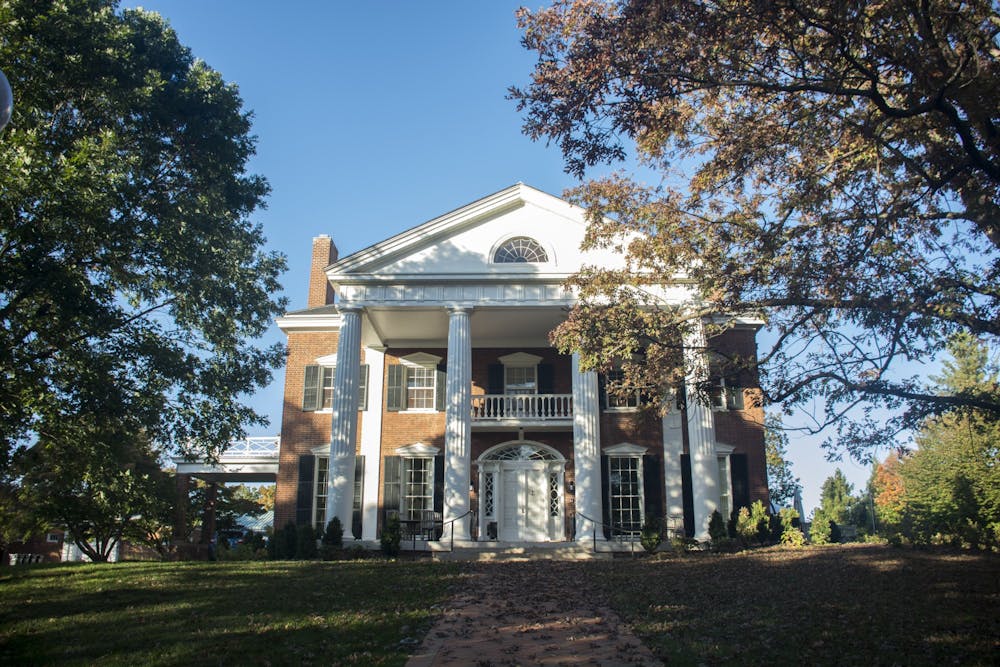Before the World Health Organization declared COVID-19 a global pandemic, Virginia Magazine published on its cover a story touting the $13.9 million renovation of Carr’s Hill, University President Jim Ryan’s residence on Grounds. Completed in 1909, the house is a veritable mansion, boasting 13,700 square feet, seven bedrooms and eight bathrooms. Before the pandemic, Ryan’s mansion was excessive. At a time when college is increasingly unaffordable, it is indefensible.
Once the site of student housing, Carr’s Hill has become the site of presidential hypocrisy. Even before its opening, the house was controversial, with one student comparing Carr’s Hill to “hills as castles for feudal lords.” The pandemic exacerbates this inequality. Not only is Ryan topographically above students, but he is physically isolated from them — in an ivory tower while students quarantine in hotel rooms and dormitories suffer clusters of COVID-19.
When Carr’s Hill reopened before the pandemic, Ryan took care to involve the University community — inviting those behind the 2020 Community MLK Celebration and announcing a monthly “Arts on the Hill” celebration. These events presume it is an honor to visit a presidential mansion and that Ryan is benevolent for opening University-funded doors. Although the Carr’s Hill website claims it is in part a “public-private space,” Carr’s Hill is a closed space entirely because it is a private residence. For $13.9 million, it is a condescending insult — not an honor — to students and their families.
The first in his family to graduate from college, Ryan has used his personal biography to reaffirm his commitment to accessibility. This commitment apparently ends at his own personal finances. Even without Carr’s Hill, Ryan would receive enough money from the University to live in a mansion. Along with paid expenses, a $20,000 vehicle allowance and membership in two clubs — among other benefits — Carr’s Hill is part of a gluttonous pay package that exceeds the nominal compensation of any previous University president. For his first 11 months, Ryan earned a salary, bonus and deferred compensation totaling $962,875 — more than four times the salary of the highest-paid U.S. governor. After recent senior leadership pay cuts, Ryan still earned $695,250 in base pay — more than three times the highest-paid U.S. governor and enough to cover in-state tuition for 49 students in the College of Arts and Sciences.
Upon hiring its first president, Edwin Alderman, the University offered him a $5,000 salary — less than $150,000 when adjusted for inflation. Ryan now earns multiples of Alderman’s inflation-adjusted salary, as well as $135,419.10 more than the woman who preceded him, former University President Teresa Sullivan. Despite minimal evidence for a return on investment, the rise in presidential compensation at the University mirrors increases elsewhere. Still, even after his 10 percent salary reduction, Ryan remains among the highest-paid public university presidents. During COVID-19, Ryan has not even taken the largest pay cut of the University’s senior leadership — Dr. K. Craig Kent, executive vice president for health affairs, took a 40 percent cut in April.
Although he is not the highest-paid public university president, Ryan is among the most hypocritical. With his pay package, Ryan himself can comfortably afford the cost of college tuition, but as president, he has made college less affordable for everyone else — consistently supporting tuition increases that exceed inflation. For a president who has staked his legacy on accessibility, it is unfair to expect exorbitant compensation while asking students and families to pay more.
To improve accessibility, Ryan has announced initiatives funded with other people’s money — tuition-free college for in-state families earning less than $80,000 and the Walentas Scholars program for first-generation students. But Ryan must back up his public statements with personal action. $695,250 in base pay is not good stewardship — it is selfishness. With a mansion, paid expenses, a $20,000 vehicle allowance and membership in two clubs, Ryan can sacrifice for the University he claims to love.
Adam Grim is an Opinion Columnist for The Cavalier Daily. He can be reached at opinion@cavalierdaily.com.
The opinions expressed in this column are not necessarily those of The Cavalier Daily. Columns represent the views of the authors alone.







